Thursday 27th February 2014Shipping Your Masterpieces to Your Buyer

If you've ever tried to ship something delicate before, it's almost a guarantee that you've had a bad experience. It's a frustrating but almost inescapable law of modern logistics that the more fragile something is, the greater its potential for having a warehouse worker drive a forklift through the middle of it or accidentally drop it down a flight of stairs. So once you've made your sale, said goodbye to your beloved masterpiece, and actually come down to the 'How' question of shipping, be sure to take all possible precautions. (Note: we're sorry, but we can't be held responsible if you follow these methods and something bad happens to your work - these are intended as general guidelines only.)
If you're working a digital medium, and selling prints to your buyers, your life is considerably easier. Most shipping stores and post offices sell shipping tubes for just such eventualities, and they tend to be made out of extremely durable cardboard. Ensure that you don't skimp out on expensive shipping materials, and buy a tube with adequate structural integrity. Depending on the type of paper you've chosen to print on, you should also be wary of buying a tube with sufficient diameter to prevent any print coatings on the paper from being damaged while rolled, as the coatings may compress and crack when unrolled if they are rolled too tightly. Even if you make all the right choices, accidents can happen - but at least in that case, you're only out a single print of your work, and the original hasn't been lost forever.
When you're shipping something like a framed work, a painting, or anything on stretched canvas, for example, shipping tubes are clearly not an option. However, with a bit of creative thinking and a trip to your local hardware and/or shipping store, you can quickly construct something that will prevent even the most delicate piece from being damaged by the most careless employee. First, wrap your piece in some type of thin plastic to protect the surface. Follow this up with a couple of layers of bubble wrap, paying close attention to the corners. Next, take some thick corrugated cardboard and cut a custom-sized set of panels, one for each side of your piece. Ensure that there are several inches of extra cardboard around each edge. Take these two pieces and carefully fold the edges over to create an internal protective layer. Wrap this whole thing in bubble wrap once again (you'll want the kind with large bubbles, not the smaller types use in electronics packaging), and place it in a telescoping shipping box, which any shipping store can provide. Voila! Don't forget to buy some shipping insurance when you send the package, just in case the worst should happen - the world is governed by Murphy's Law, of course.
If you don't want to deal with the hassle of all of this, it's quite possible that you'll be able to find a shipping company near you who specializes in transportation of artworks and other extremely valuable and fragile one-of-a-kind items. They're definitely more expensive, but when you're shipping a piece worth thousands of dollars, it's better not to mess around and hope for the best. Even the best insurance in the world can't bring your piece back from destruction. Remember - this is only a guide. If you're not certain you can do it yourself, hire a professional shipper.
Posted on February 27th 2014 on 08:06pm
0 Comments
Tuesday 25th February 2014The Best Cities for Art Lovers 5: Basel
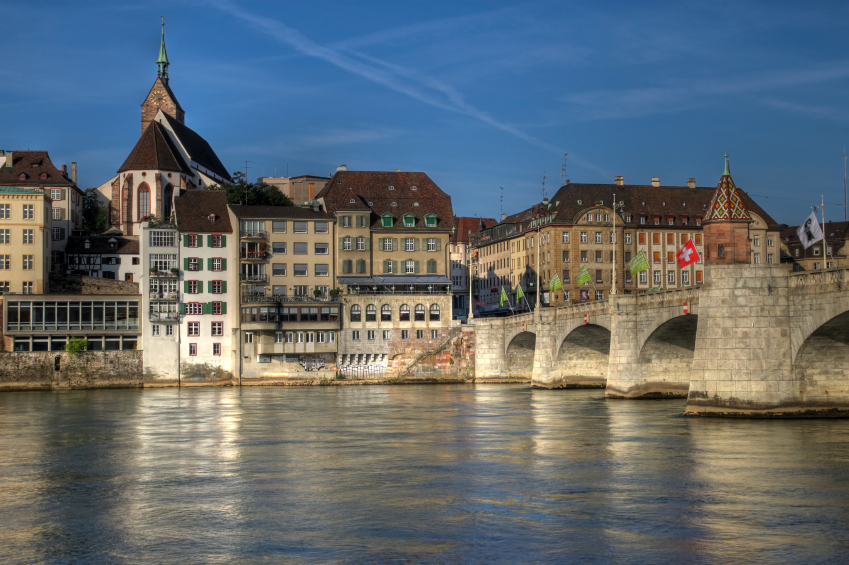
On our continuing journey through the best cities in the world for the experienced art lover, we've decided to stay in Europe, and move north from last post's foray into the old-new blending that is Florence to the idyllic city of Basel, Switzerland, located right along the Rhine. This is another of the smaller cities that many of even the most well-travelled art enthusiasts have overlooked, but it's definitely on the rise as travellers and artists begin to search even further off the beaten track.
Perhaps it's not really fair to call Basel off the beaten track, exactly, but it's definitely absent from most 'Top X Cities for Art' lists that aficionados carry around in their heads. Over a million tourists every year grace the streets of Basel - but that's still a far cry from the tens of millions that flock to other cultural capitals around Europe and throughout the other major cities of the art world. Most of the visitors that arrive in Basel are drawn by the astonishing number of museums that dot the city, over three dozen at last count, which is a truly impressive number for a city with a population that's barely over 500,000.
The majority of these museums have a heavy focus on the fine arts of drawing, painting and sculpture, and the collections cover a veritable who's who of famous artists from around the world dating from the end of the Renaissance era to modern 21st century works. You can find everything from Claude Monet to Andy Warhol and Vincent Van Gogh to Jasper Johns, and a sampling almost everything in between, all at the world-famous Kunstmuseum Basel, easily the largest of the city's museums. Some of the lesser-visited museums deserve to be more noted, however, including the Vitra Design Museum which was designed by Frank Gehry, and the Schaulager which houses a stunning collection of modernists and contemporary works.
The museums aren't the only draw to the city, however, as the Basel art fair "Art|Basel" is often touted as the archetypal art fair that is responsible for spawning the legions of art fair imitators that have been springing up all over the world. First hosted in Basel in 1970, it's easy to see how they can make this claim - although interestingly, the show also has two other locations that it travels to throughout the year - Miami Beach and Hong Kong, neither of which tend to be on the art world's radar either. Perhaps this should change - so if you find yourself in any of those places, be sure to stop by and see the art fair that started them all!
Posted on February 25th 2014 on 08:04pm
0 Comments
Friday 21st February 2014Making the Best Prints for Your Buyers
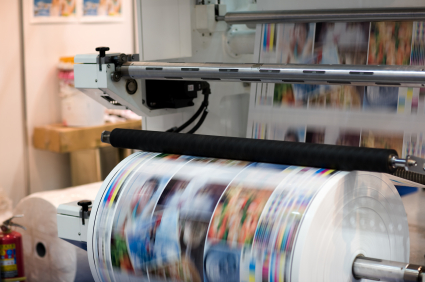
Congratulations! You've made your first art sale on Gallereo as a digital artist! The client's money comes through and - wait a second. They want a real, physical print, not a JPEG file - and it has to be absolutely pristine, premium quality, because you want them to be appreciating it for years to come, instead of having it fade and lose its lustre. With only a short turnaround time before you have to get the piece in the mail, what is your best option for producing a high quality print quickly? Fortunately for panicking artists and designers, there are a number of possible solutions.
Perhaps the quickest solution is to find a local print shop. This might be acceptable to some, depending on how much pride they take in their work - something above a Kinko's but not as nice as a proper offset printer. The problem with these places is that they tend to specialize in one-off projects that aren't intended for long-term display. They're produce a decent quality print, with decent colour accuracy and if you're lucky, they'll even be using a high-quality ink that won't start to fade after a couple of months of light exposure. But your choice of paper is going to be fairly limited, and they can get expensive quickly, eating up the profits from your hard-won sale.
The best choice for making art prints is to find a local offset printer. These are the companies and technologies that create most of (if not all of) the high-quality art prints you've ever seen or purchased. An offset printer is a huge device that can print massive quantities of an image or design in a relatively short period of time. Because their one job is printing, they typically offer an impressive array of paper choices in terms of weight, texture and size, and can meet any custom requirements or specifications you may have. The downside, of course, is that they are in high demand, and don't lift a finger if you only want a single copy of something. However, if you can establish a set number of prints that you plan to sell, in what's known as a 'limited run' - 250, 500, and 1000 are common numbers, although lower volumes mean each print is worth more - you can treat the initial outlay as an investment and make the money back over the course of each sale.
Alternatively, of course, the field of home printing has come quite a long way. Depending on the size of prints you plan to sell, many of the high-quality large format printers produced by famous brands like Epson and Canon can create beautiful prints right at home - but the cost of these printers can be a bit shocking when you first see the price tags, and the cost of ink refills can be almost as shocking. If you plan to make lots of prints, though, nothing beats the convenience of being able to simply click 'Print' from your computer chair, and then wrap up the finished piece a few minutes later. The quality may not be as good as an offset press, but the technology is always improving.
Optimally, of course, you'll have planned this out all in advance and advertised the style of paper and print quality as a part of your sales pitch on your Gallereo page itself - but don't worry, we've all been there at one point or another. Once the initial surprise at your first online art sale is over, you'll have a bit of time to take stock of the situation, source the best possible offset printer in your area and find out what papers they offer that would best suit your style of work. If all else fails, remember that the cost of these expenses can probably be written off on your taxes!
Posted on February 21st 2014 on 02:08am
0 Comments
Wednesday 19th February 2014Keeping Your Gallereo Page Looking Current

One of the most common mistakes made by artists who are new to the digital world make is also probably one of the most understandable ones. Not being zoomed in to the world of the web and the extremely rapid stylistic evolutions of digital design means that many artists are suddenly left with websites that look outdated and even antiquated to the public. The general web-going public may not be able to put their finger exactly on what seems 'off' about these sites, but the average art buyer is a little more savvy when it comes to current trends in design, and at the very least, they are deliberately conscious of what what they like and what they don't. This begs the question - when is it time to update your Gallereo page design?
Somewhat frustratingly, there isn't an easy answer to this question. Some people in the web design world offer a general rule of thumb that maintains updating your website every two years will allow you to stay on top of current trends, but considering the amount of time and effort that many people put into their sites, this isn't really practical. This is doubly true when (like most artists) you're not working with a professional web designer, and have to do the work yourself.
That being said, it's important to pay attention to the latest design trends to ensure that the contemporary feel of your website is maintained. Unless you're going for a specifically retro look, it's best to pay close attention to the design styles of some of the most popular websites to determine where they're going. For example, Apple's website design style used to correspond with their launch of the OSX operating system, featuring clean, rounded-glass styled buttons that leapt off the page in 3D.
In today's world, however, buttons like that tend to look a little over-designed and flashy, and the latest trend leans towards what is known as 'flat' design, with slight to minimal gradients on buttons and a greater emphasis on usability and clarity instead of needless flashiness. There is an added bonus to this recent emphasis, of course - clarity and well-planned sites are much, much better at turning visitors into buyers.
Like the fashion world, design styles often seem cyclical, which can bring trends back around into vogue that were popular years ago and died out for a while. Even still, it's a long cycle, and while it may seem like forever, the web has only been around in earnest for a little over a decade - it's better to stay current with your Gallereo design in order to maximize your sales and attract the most visitors.
Posted on February 19th 2014 on 01:41am
0 Comments
Friday 14th February 2014The 2014 World Press Photo Awards
The art world is filled with awards shows - lets face it, we artists are a proud bunch, and it always helps to have an award that proves how unique your particular artistic vision is. Despite what we may tell ourselves, at some point in our artistic process, we do want to be recognized. While art for personal reasons can be cathartic even if it's not shown to anyone, that can only go so far. But one of the most interesting awards in the art scene bridges the gap between journalism and art: the World Press Photo Awards, given each year for the most emotionally captivating photojournalism.
Some might argue that photojournalism isn't art, and most of the time, they're right, but there are select images that reach out so powerfully to us and affect our emotions so deeply that almost everyone agrees they qualify as art. Some of the world's most well-known photographs are winners from this competition, and the winning pieces are often quite controversial. The winner last year, for example,
For those of you unfamiliar with the WPP awards, there are a number of categories open to photographers: News, Contemporary Issues, Daily Life, Sports, People, Nature, and the biggest prize of all, the Photo of the Year. Each category, except for Nature and the Photo of the Year, is generally divided into two categories, making for a total of twelve first place prizes given out.
This year's winner for Photo of the Year is actually a bit disappointing, in this photographer's opinion, although it is still a fairly powerful image. It shows a group of migrants silhouetted against the sky on the shore in Djibouti, their cellphones held aloft, framed by the moon, trying to capture an elusive wisp of carrier signal from nearby Somalia so as to try to stay in touch with relatives in other parts of the world.
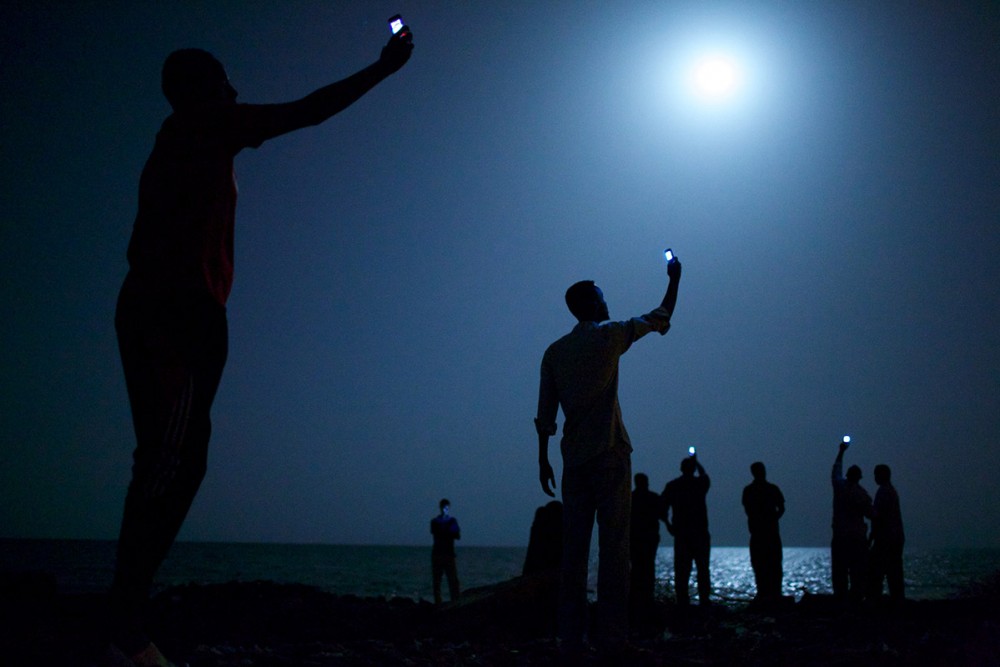
There is a certain desolate hopelessness about the image, a feeling of ethereal beauty about the tenuous nature of connection in the modern world, especially when it is upset by strife and forces us to change and re-evaluate our circumstances. That being said, it lacks some of visual impact displayed in some of the other categories, and definitely lacks the controversial feel which has often been a hallmark of the WPP awards in previous years - although this relatively conservative choice may be a reflection of the controversy surrounding last year's winner, which showed two young children, being carried through Gaza City to their own funerals - definitely edgy material.
Posted on February 14th 2014 on 09:31pm
0 Comments
Tuesday 11th February 2014The Best Cities for Art Lovers 4: Florence
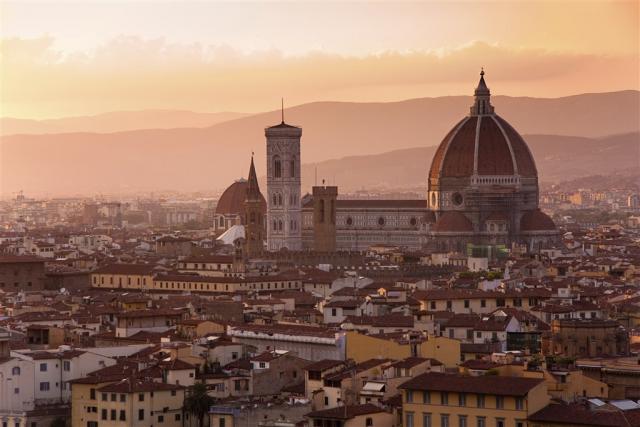
Europe positively abounds with centres of artistic creativity that have been steeped in both ancient and modern artistic splendour and renown, and almost everyone can list at least a few of the big ones - Paris, London, Amsterdam, Rome, Barcelona, Berlin - but these cities are also among the most travelled in Europe, and probably in the world. So what about the smaller names? The less-travelled (even if only slightly) path? Today we're going to look at one of the true jewels of Italy and the art world: Florence.
Firenze, as it is known in Italian, is often called the birthplace of the Renaissance, and rightly so. It was hugely influential in the development of Italian artistic styles, and boasts some of the most well-known Italian artists of antiquity: Michelangelo, Donatello, Giotto, Botticelli and Leonardo da Vinci (among many, many others). As a result, a huge number of their works are hosted in galleries throughout Florence, of which there is an absolute profusion. The Galleria degli Uffizi (Uffizi Gallery, in English) is arguably the paramount gallery for Renaissance art in all of Italy; the Bargello Museum is one of the oldest still standing, established in 1865, though the building that houses it dates back to the 13th century; and the Galleria dell'Accademia, which is home to the world-famous "David" sculpture by Michelangelo, which it's not touring the world.
But the old masters aren't all there is the Florentine art scene. Just in the historic centre alone there are over forty galleries which feature contemporary artists, as the rich legacy of artistic tradition beckons young and old aspiring artists, and inspires them to incredible heights. The interplay between old and new, traditional and contemporary is visible at every step, but no more so than in the Marino Marini Museum, which is housed in the former Church of St. Pancrazio, which has been deconsecrated. Just down the street can be found the Alinari National Museum of Photography, a mere 5 minutes away, which truly highlights the differences between traditional artistic modes and the modern, for there are few more modern art forms than photography.
Regardless of which direction your artistic taste leans - or best of all, if you prefer a blend of modern and Renaissance - Florence will help you scratch that artistic itch, without being mobbed by the sorts of crowds you so often find in the famous larger European cities.
Posted on February 11th 2014 on 10:25pm
0 Comments
Thursday 06th February 2014Missing Art Discovered Stashed in Salzburg
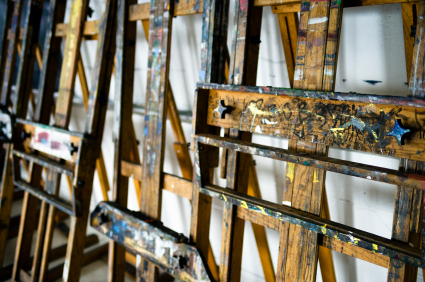
Often overlooked among the despicably inhuman acts of World War 2 is the cultural fate of the nations that were invaded by the Nazis. As part of their cultural persecutions, many pieces of famous art were confiscated from their owners, branded as 'degenerate art' and boxed up and hidden in various locations by Nazi soldiers. However, not all the pieces that were branded 'degenerate' were destroyed outright, and according to the Claims Conference, an organisation dedicated to restitution of valuables lost during the war, four art dealers were commissioned by Hitler to handle sales of stolen art with the intent of helping to fund the war effort. They claim that Hildebrand Gurlitt was one of those four, who died in 1956 leaving a staggering number of potentially stolen works in the possession of his son, Cornelius Gurlitt.
After the initial discovery of over 1400 paintings were discovered in Gurlitt's apartment in Munich in 2012, including long-lost pieces by Pablo Picasso, Otto Dix and Henri Matisse among other long-lost and even previously unknown works, the initial appraisal placed the value of the works at $1.35 billion US dollars. This inspired the further exploration of a house in Salzburg, Austria, which lead to the discovery of even more unknown paintings, numbering nearly 60. A lawyer for Mr. Gurlitt, Hannes Hartung, described the collection: "They are very prominent works. A wonderful Seine scene by Pissarro, a wonderful bridge picture by Monet and a sailing boat sea scape by Manet. Then there are also many other works by Renoir, and by Liebermann. They are in general artistically outstandingly good pieces, which are of more significance than the collection from Schwabing [located in Munich]."
It's important to note that it has yet to be proven one way or the other whether the paintings were inherited legally by Mr. Gurlitt, although authorities have taken possession of the works until their provenance can be verified. Mr. Gurlitt insists that his father only purchased paintings legally, although many groups are calling for a list of the works to be published so that their own experts can cross-reference looking for stolen pieces.
Perhaps the strangest part of all? All these revelations stemmed from a simple tax investigation by German authorities. It makes the imagination wonder what other artistic treasures have been locked away from the world for so long that we've forgotten about them, or believed them destroyed.
Posted on February 06th 2014 on 06:37pm
0 Comments
Sunday 02nd February 2014When Celebrity Art Gets Weird: #IAMSORRY
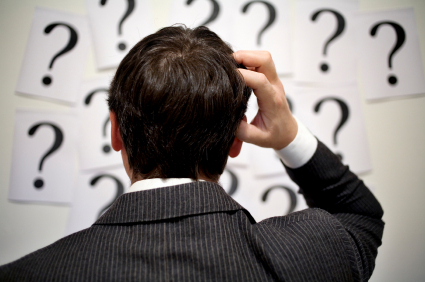
Film is undeniably one of the great art forms of the modern world. Whether you're looking at an intricate Scorsese drama or a visual feast like Samsara, films have the power to move us, to change the way we look at the world - and that's one of the best quick working definitions for art. However film is unlike most other art in that it often depends on actors to create its emotional power. The human brain seems hardwired for appreciation of celebrity, and when this starts to merge with a desire to create art, things can sometimes get pretty weird.
Case in point: actor Shia LeBeouf, most recently star of the Transformers film series among others, has had some troubles of late. Being accused (apparently accurately) of plagiarising the work of artist Daniel Clowes in a short film HowardCantor.com which debuted, astonishingly enough, at the May 2012 Cannes Film Festival, LaBeouf has repeatedly tried to apologize to the artist whose work he took nearly verbatim. After claiming simply to have been 'lost in the creative process', he decided to take a decidedly different tack to the apology.
Well, that's not quite true - first he decided to try skywriting an apology, despite the fact that Clowes wasn't anywhere near the locations it would be visible. He then moved on to a bizarre installation/performance art piece, entitled #IAMSORRY (the use of hashtags appears to be a reference to the fact that many of the revelations about this story appeared on Twitter). The exhibit is a arguably an art stunt more than an actual installation piece, although these lines are often hard to distinguish and frequently depend on the mood of the reviewer. Despite a collaboration with artists Luke Turner and Nastja Säde Rönkkö, critical reception of the work - what little there was of it - seems to have been generally negative.
The exhibit consists of Shia LeBeouf sitting in an empty room with a paper bag over his head. But naturally, he's not there all the time, despite having posted hours of 11AM to 6PM Tuesday through Sunday. After lining up outside often for hours at a time (without any guarantee of being admitted at all), visitors/participants are checked over by security with a metal-detector and passed one at a time into an antechamber filled with icons related to LeBeouf's previous work. Note that's not 'one by one', but rather one at a time - only one visitor is ever in the room with him at once. The length of time spent in the room is dependent on the wills and interest of both parties, not any particular set of rules.
Does this make for a decent art installation? Does it make for art at all? It's hard to say. Does it make a good apology for plagiarism? Arguably it just makes things worse, as many have pointed out similarities between #IAMSORRY and a performance piece by artist Marina Abramovic that employed a nearly identical premise - just without the hashtags.
Posted on February 02nd 2014 on 06:03pm
0 Comments
 If you've ever tried to ship something delicate before, it's almost a guarantee that you've had a bad experience. It's a frustrating but almost inescapable law of modern logistics that the more fragile something is, the greater its potential for having a warehouse worker drive a forklift through the middle of it or accidentally drop it down a flight of stairs. So once you've made your sale, said goodbye to your beloved masterpiece, and actually come down to the 'How' question of shipping, be sure to take all possible precautions. (Note: we're sorry, but we can't be held responsible if you follow these methods and something bad happens to your work - these are intended as general guidelines only.)
If you've ever tried to ship something delicate before, it's almost a guarantee that you've had a bad experience. It's a frustrating but almost inescapable law of modern logistics that the more fragile something is, the greater its potential for having a warehouse worker drive a forklift through the middle of it or accidentally drop it down a flight of stairs. So once you've made your sale, said goodbye to your beloved masterpiece, and actually come down to the 'How' question of shipping, be sure to take all possible precautions. (Note: we're sorry, but we can't be held responsible if you follow these methods and something bad happens to your work - these are intended as general guidelines only.) On our continuing journey through the best cities in the world for the experienced art lover, we've decided to stay in Europe, and move north from last post's foray into the old-new blending that is Florence to the idyllic city of Basel, Switzerland, located right along the Rhine. This is another of the smaller cities that many of even the most well-travelled art enthusiasts have overlooked, but it's definitely on the rise as travellers and artists begin to search even further off the beaten track.
On our continuing journey through the best cities in the world for the experienced art lover, we've decided to stay in Europe, and move north from last post's foray into the old-new blending that is Florence to the idyllic city of Basel, Switzerland, located right along the Rhine. This is another of the smaller cities that many of even the most well-travelled art enthusiasts have overlooked, but it's definitely on the rise as travellers and artists begin to search even further off the beaten track. Congratulations! You've made your first art sale on Gallereo as a digital artist! The client's money comes through and - wait a second. They want a real, physical print, not a JPEG file - and it has to be absolutely pristine, premium quality, because you want them to be appreciating it for years to come, instead of having it fade and lose its lustre. With only a short turnaround time before you have to get the piece in the mail, what is your best option for producing a high quality print quickly? Fortunately for panicking artists and designers, there are a number of possible solutions.
Congratulations! You've made your first art sale on Gallereo as a digital artist! The client's money comes through and - wait a second. They want a real, physical print, not a JPEG file - and it has to be absolutely pristine, premium quality, because you want them to be appreciating it for years to come, instead of having it fade and lose its lustre. With only a short turnaround time before you have to get the piece in the mail, what is your best option for producing a high quality print quickly? Fortunately for panicking artists and designers, there are a number of possible solutions. One of the most common mistakes made by artists who are new to the digital world make is also probably one of the most understandable ones. Not being zoomed in to the world of the web and the extremely rapid stylistic evolutions of digital design means that many artists are suddenly left with websites that look outdated and even antiquated to the public. The general web-going public may not be able to put their finger exactly on what seems 'off' about these sites, but the average art buyer is a little more savvy when it comes to current trends in design, and at the very least, they are deliberately conscious of what what they like and what they don't. This begs the question - when is it time to update your Gallereo page design?
One of the most common mistakes made by artists who are new to the digital world make is also probably one of the most understandable ones. Not being zoomed in to the world of the web and the extremely rapid stylistic evolutions of digital design means that many artists are suddenly left with websites that look outdated and even antiquated to the public. The general web-going public may not be able to put their finger exactly on what seems 'off' about these sites, but the average art buyer is a little more savvy when it comes to current trends in design, and at the very least, they are deliberately conscious of what what they like and what they don't. This begs the question - when is it time to update your Gallereo page design?
 Europe positively abounds with centres of artistic creativity that have been steeped in both ancient and modern artistic splendour and renown, and almost everyone can list at least a few of the big ones - Paris, London, Amsterdam, Rome, Barcelona, Berlin - but these cities are also among the most travelled in Europe, and probably in the world. So what about the smaller names? The less-travelled (even if only slightly) path? Today we're going to look at one of the true jewels of Italy and the art world: Florence.
Europe positively abounds with centres of artistic creativity that have been steeped in both ancient and modern artistic splendour and renown, and almost everyone can list at least a few of the big ones - Paris, London, Amsterdam, Rome, Barcelona, Berlin - but these cities are also among the most travelled in Europe, and probably in the world. So what about the smaller names? The less-travelled (even if only slightly) path? Today we're going to look at one of the true jewels of Italy and the art world: Florence. Often overlooked among the despicably inhuman acts of World War 2 is the cultural fate of the nations that were invaded by the Nazis. As part of their cultural persecutions, many pieces of famous art were confiscated from their owners, branded as 'degenerate art' and boxed up and hidden in various locations by Nazi soldiers. However, not all the pieces that were branded 'degenerate' were destroyed outright, and according to the Claims Conference, an organisation dedicated to restitution of valuables lost during the war, four art dealers were commissioned by Hitler to handle sales of stolen art with the intent of helping to fund the war effort. They claim that Hildebrand Gurlitt was one of those four, who died in 1956 leaving a staggering number of potentially stolen works in the possession of his son, Cornelius Gurlitt.
Often overlooked among the despicably inhuman acts of World War 2 is the cultural fate of the nations that were invaded by the Nazis. As part of their cultural persecutions, many pieces of famous art were confiscated from their owners, branded as 'degenerate art' and boxed up and hidden in various locations by Nazi soldiers. However, not all the pieces that were branded 'degenerate' were destroyed outright, and according to the Claims Conference, an organisation dedicated to restitution of valuables lost during the war, four art dealers were commissioned by Hitler to handle sales of stolen art with the intent of helping to fund the war effort. They claim that Hildebrand Gurlitt was one of those four, who died in 1956 leaving a staggering number of potentially stolen works in the possession of his son, Cornelius Gurlitt. Film is undeniably one of the great art forms of the modern world. Whether you're looking at an intricate Scorsese drama or a visual feast like Samsara, films have the power to move us, to change the way we look at the world - and that's one of the best quick working definitions for art. However film is unlike most other art in that it often depends on actors to create its emotional power. The human brain seems hardwired for appreciation of celebrity, and when this starts to merge with a desire to create art, things can sometimes get pretty weird.
Film is undeniably one of the great art forms of the modern world. Whether you're looking at an intricate Scorsese drama or a visual feast like Samsara, films have the power to move us, to change the way we look at the world - and that's one of the best quick working definitions for art. However film is unlike most other art in that it often depends on actors to create its emotional power. The human brain seems hardwired for appreciation of celebrity, and when this starts to merge with a desire to create art, things can sometimes get pretty weird.



